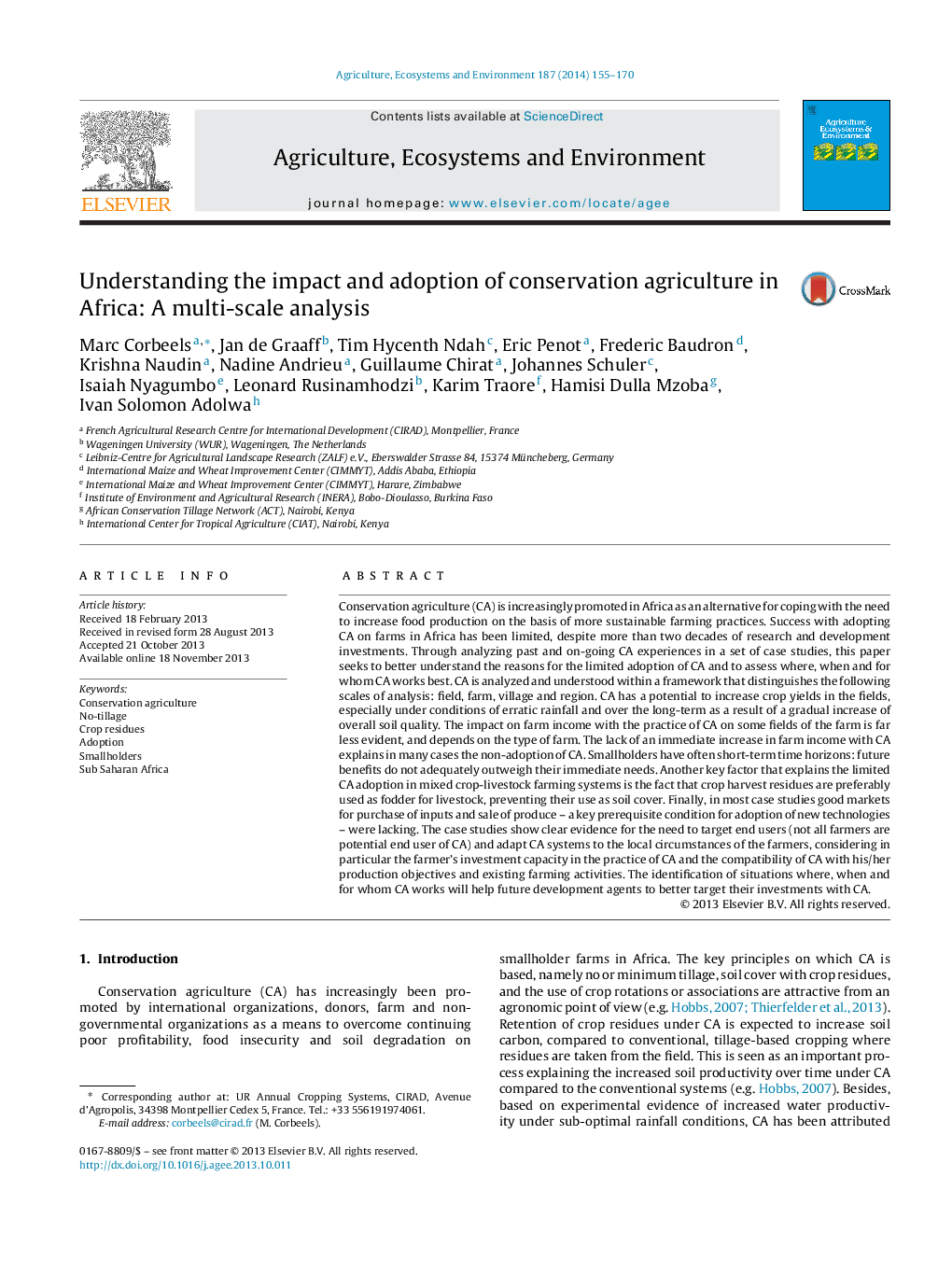| کد مقاله | کد نشریه | سال انتشار | مقاله انگلیسی | نسخه تمام متن |
|---|---|---|---|---|
| 2414123 | 1552065 | 2014 | 16 صفحه PDF | دانلود رایگان |
• Regular crop yield benefits from conservation agriculture (CA) take time to occur.
• CA has a potential to mitigate negative effects from climate change.
• The impact of CA on farm income is not evident, and depends on the type of farm.
• Strong trade-offs between CA and livestock exist at farm and village scale.
• Poor markets are a major bottleneck for adoption of CA.
Conservation agriculture (CA) is increasingly promoted in Africa as an alternative for coping with the need to increase food production on the basis of more sustainable farming practices. Success with adopting CA on farms in Africa has been limited, despite more than two decades of research and development investments. Through analyzing past and on-going CA experiences in a set of case studies, this paper seeks to better understand the reasons for the limited adoption of CA and to assess where, when and for whom CA works best. CA is analyzed and understood within a framework that distinguishes the following scales of analysis: field, farm, village and region. CA has a potential to increase crop yields in the fields, especially under conditions of erratic rainfall and over the long-term as a result of a gradual increase of overall soil quality. The impact on farm income with the practice of CA on some fields of the farm is far less evident, and depends on the type of farm. The lack of an immediate increase in farm income with CA explains in many cases the non-adoption of CA. Smallholders have often short-term time horizons: future benefits do not adequately outweigh their immediate needs. Another key factor that explains the limited CA adoption in mixed crop-livestock farming systems is the fact that crop harvest residues are preferably used as fodder for livestock, preventing their use as soil cover. Finally, in most case studies good markets for purchase of inputs and sale of produce – a key prerequisite condition for adoption of new technologies – were lacking. The case studies show clear evidence for the need to target end users (not all farmers are potential end user of CA) and adapt CA systems to the local circumstances of the farmers, considering in particular the farmer's investment capacity in the practice of CA and the compatibility of CA with his/her production objectives and existing farming activities. The identification of situations where, when and for whom CA works will help future development agents to better target their investments with CA.
Journal: Agriculture, Ecosystems & Environment - Volume 187, 1 April 2014, Pages 155–170
